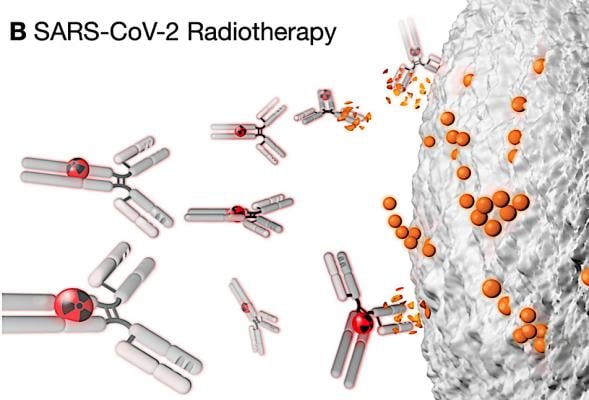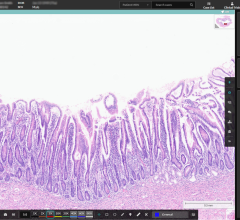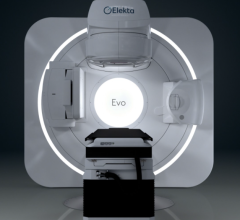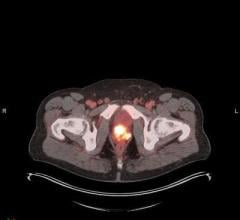
In I-131 cancer therapy, decay events damage sensitive DNA within a tumor cell nucleus, causing catastrophic single and double strand breaks. Clinical use of antibody-delivered Auger emitters could open a window for the targeted destruction of extracellular COVID-19 virions, decreasing the viral load during active infection and potentially easing the disease burden for a patient. View all figures from this study.
July 22, 2020 — One of the first studies has been published that looks at the use of radiation therapy to help treat COVID-19 (SARS-CoV-2) patients in the article "Oncology-inspired treatment options for COVID-19" published in the Journal of Nuclear Medicine July 17.[1]
Researchers from Memorial Sloan Kettering Cancer Center, New York, radiolabled the CR3022 human antibody with Iodine-131 (I-131) as a targeted agent, since this antibody binds to the SARS-CoV-2 virus.
"Our results confirm the potential of CR3022 as a molecularly targeted probe for SARS-CoV-2. A labeled version of CR3022 could potentially be used for Auger radiotherapy or non-invasive imaging," the researchers concluded.
Researchers said they labeled the antibody with Iodine-131 using the Iodogen-method and purified, yielding 131I-CR3022. Using a magnetic bead assay and a recombinant SARS-CoV-2 spike protein fragment, they tested the binding of 131I-CR3022 in the presence and absence of CR3022. The result was they conjugated the antibody CR3022 with a purity more than 98 percent and a molar activity of more than 7.9 mCi/mg. They confirmed the binding of 131I-CR3022 is selective, and is significantly reduced in the presence of unlabeled antibody (3.14 ± 0.14 specific uptake and 0.10 ± 0.01 specific uptake, respectively; P < 0.0001).
This is not the first time radiotherapy has been considered for treating viruses. I-125 was explored as an Auger-based radiotherapeutic for a genetically engineered measles virus. The virus, which expressed the sodium iodide symporter in infected cells, was sensitive to I-125 in vitro, where virus replication could be stopped. However, the results did not translate to an in vivo model, suggesting sub-optimal pharmacokinetics of I-125.[2]
Researchers said a selective, molecularly targeted vector such as the monoclonal antibody (mAb) CR3022 could serve as a delivery agent for I-125. CR3022 binds to the SARS-CoV-2 receptor binding domain (RBD) with a KD of 6.3 nM. The antibody is cross-reactive and conserved across several coronaviruses, making it ideal for targeting SARS-CoV-2, but potentially also related diseases.[3,4]
Another iodine isotope, I-131, is used as a standard-of-care treatment for certain types of thyroid cancers and has widespread use in scintigraphies and whole body SPECT imaging, the authors wrote. They said it made sense that radiolabeled CR3022 could be valuable for imaging, potentially serving as a direct, spatially resolved, contemporaneous and non-invasive readout of viral load within a patient.
From a drug-development perspective, a direct readout of SARS-CoV-2 viral load could represent a quick, upstream indicator of therapy success. This could be particularly interesting as a tool for clinical research, and similar approaches have been used to accelerate oncologic drug development pipelines in the past.[5]
Read the entire open-access article.
CR3022 Antibody Could be COVID-19 Achilles Heel
National Institutes of Health Director Francis Collins, M.D., Ph.D., wrote a blog in April on the CR3022 human antibody might hold the key to developing effective therapy against COVID-19.[6] He said researchers had shown that CR3022 cross-reacts with the novel coronavirus, although the antibody does not bind tightly enough to neutralize and stop it from infecting cells. Some NIH-sponsored research is now looking at how precisely the antibodies attach to the virus to see if this can be leveraged by vaccine designers.
Collins said this was the subject of a recent paper in the journal Science, from the NIH-funded lab of Ian Wilson, The Scripps Research Institute, La Jolla, Calif., along with colleagues at The University of Hong Kong.[4] The findings suggest that a successful vaccine may be one that elicits antibodies that targets this same spot, but binds more tightly, thereby protecting human cells against the virus that causes COVID-19.
References:


 May 17, 2024
May 17, 2024 








